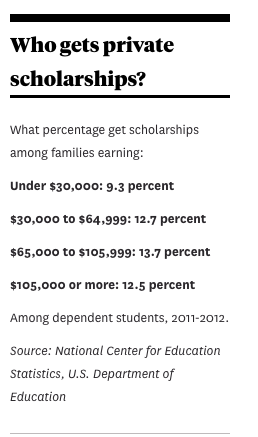Wealthy students more likely than poor to get private scholarships
Scholarships and grants are supposed to help students afford college when they may not otherwise be able to.
But a new report finds that most private scholarships, such as those through Rotary Clubs or other organizations, are being given to more wealthy students than poor ones.
Billions in scholarships going to wealthier students
According to The Hechinger Report, each year, $16.1 billion in college scholarships is made available by golf associations, Rotary Clubs, businesses and other private sources, according to the College Board—an amount almost twice as high as all the college grant money given by the 50 states combined.
And these aren’t tiny awards.
According to the U.S. Department of Education, the average award is $3,400 for students who receive private scholarships. That’s close to the average Pell Grant amount, given to the country’s neediest students, which is $3,629, according to the New America Foundation.
And these awards aren’t just going to the nation’s poorest students.
In fact, according to data collected by the Education Department, nearly 13 percent of students from families that make more than $106,000 a year get private scholarships, compared with about 9 percent of those whose families earn less than $30,000.
In addition, white students are more likely to receive private scholarships than black or Hispanic students.

Wealthy students are more likely to receive private scholarships than poorer students. (Hechinger Report)
Poorer students lack access to scholarship information
Why the discrepancy, when scholarships are meant for students who need them the most?
Experts say that wealthier students have more ways to find out about scholarship opportunities. Since their parents are more likely to have gone to college, they’re more familiar with the college and scholarship application process.
In addition, wealthy students are more likely to attend private schools with more resources and school counselors to provide information and guidance on scholarships.
According to a survey by the American School Counselor Association, a single college counselor in a public high school handles 471 students, on average, which is nearly double the caseload the association recommends (250 students to 1 counselor). It’s also almost five times the ratio in private schools.
In addition, private school counselors said they spent much more time than public school ones providing information about scholarships.
This lack of information and awareness about scholarships leads to fewer low-income students applying and more scholarships going to students who may have less of a financial need.
Giving students equal access to scholarships
It’s worth noting that low-income students are more likely to get need-based financial aid and federal grants, which can offset some of the need for private scholarships. And not even private scholarship has a financial component–some are based on merit alone.
Still, private scholarships can definitely help students make college more affordable, and students shouldn’t be limited by their access to information, which only perpetuates inequality and leaves poor students behind.
One of the reasons we started College Financing Group was to provide information to help families afford college and provide the individualized attention most busy school counselors can’t. There are many resources and ways to pay for college that students may never find out about through their counselor, and we want to make sure families have all the information they need to make the best decision possible and save money on college.
If you’re interested in learning how we can help your family pay for college, call us at 1-888-234-3907 or send us a message here and we’ll get back to you within 24 hours.
affording college, financial aid, financial aid counseling, paying for college, scholarships
